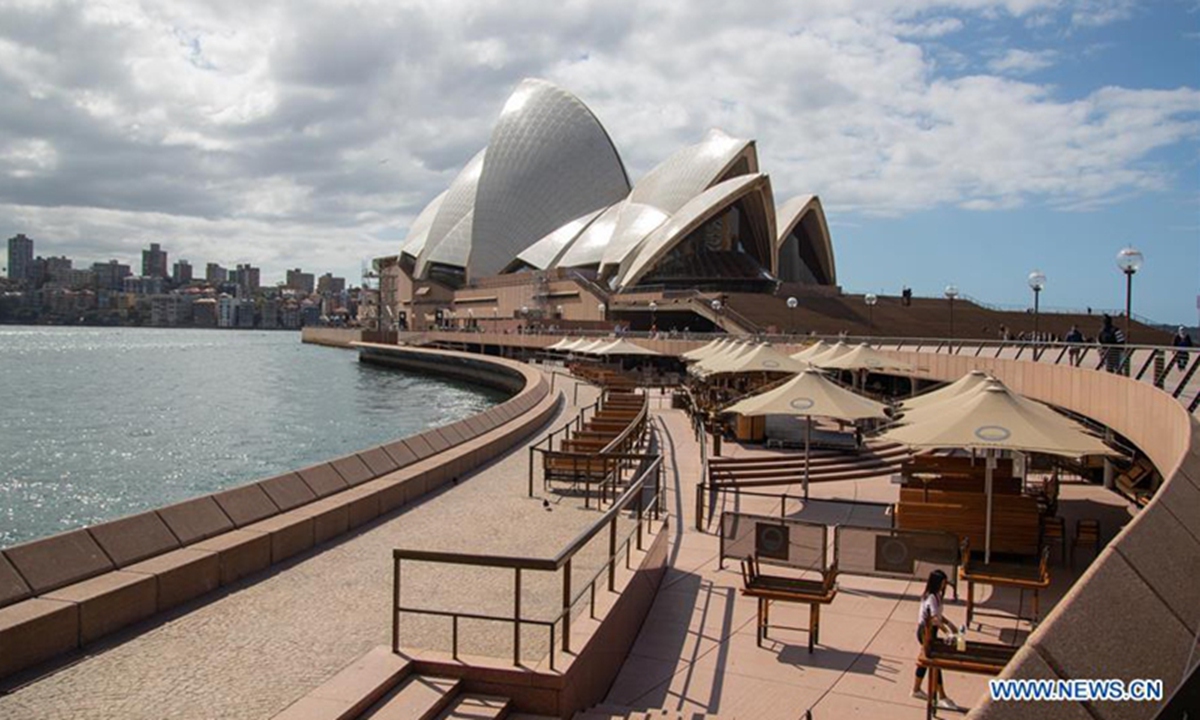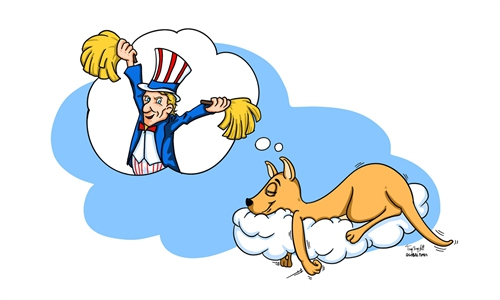
The dining zone of the Sydney Opera House Photo: Xinhua
By recording low daily COVID-19 cases in recent days, Australia is witnessing growing discussions over a potential travel "bubble," shedding a glimmer of light at the end of tunnel for revival of regional tourism.While Australian officials like New South Wales Premier Gladys Berejiklian reportedly urged the federal government to speed up travel boom arrangements to allow Australians to take holidays abroad, such calls may underline the urgency of salvaging the country's battered tourism industry. There is no denying that efforts to open up international travel are laudable, but Australia still has a long way to go to revive its tourism.
At present, Australia is holding high hope for a two-way travel boom with New Zealand that is expected to start in the first quarter of 2021. A one-way travel corridor was already opened between the two countries in October that only allows travelers from New Zealand to enter Australia quarantine-free.
But that's apparently not enough for encouraging overseas travel as travelers are still required to quarantine when returning home from Australia. In this sense, a two-way travel arrangement is essential to inject real momentum into the two countries' tourism exchange.
Yet, while a travel boost could mark the first step in restarting tourism in Australia, risks will be high given the pandemic is still ravaging many countries. It is true that Australia has fared better in curbing the pandemic when it is summer in the southern hemisphere, but it is hard to say whether there will be a resurgence of cases in coming winter once it opens borders like all the other countries in the world.
Australia is not the first country to seek the restarting of its tourism through establishing travel bubbles with low-risk neighboring countries, but such attempts will only have limited economic impact in the short term.
Statistics showed that in 2019, Australia's A$152 billion tourism industry is a key driver of its economy and employs more than 600,000 people. Tourists from China, New Zealand, the US, the UK and Japan accounted for the majority of the total visitors received by Australia in 2019. With the exception of New Zealand, Australia is unlikely to see visitors from any of the other four countries any time soon under the current circumstances.
The COVID-19 vaccine has been regarded as the key for the world to returning to normalcy, including international travel. But given the challenging vaccine rollout, it is conceivable that, for a long time to come, it will be difficult for international travel to restore its pre-pandemic levels with vaccines alone.
Over the past year, Australia's tourism industry has been hit hard by the coronavirus pandemic, causing a huge drag on the economy.
While the country's employment data for December is better than expected, lots of uncertainty remains. If Australia is serious about jump-starting its tourism industry, travel promotions with limited coverage is far from enough and more up-to-date technology means should be applied, such as reciprocal recognition of online health certificates that requires closer cooperation and trust among the interested countries.


